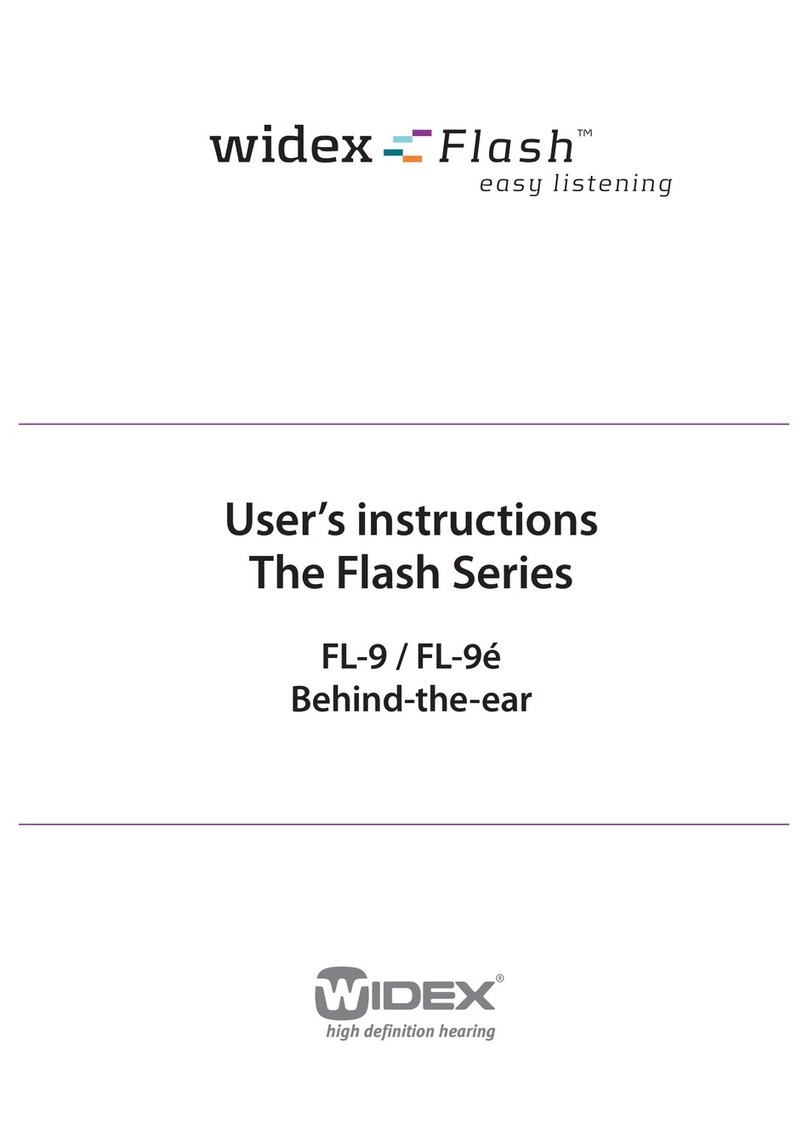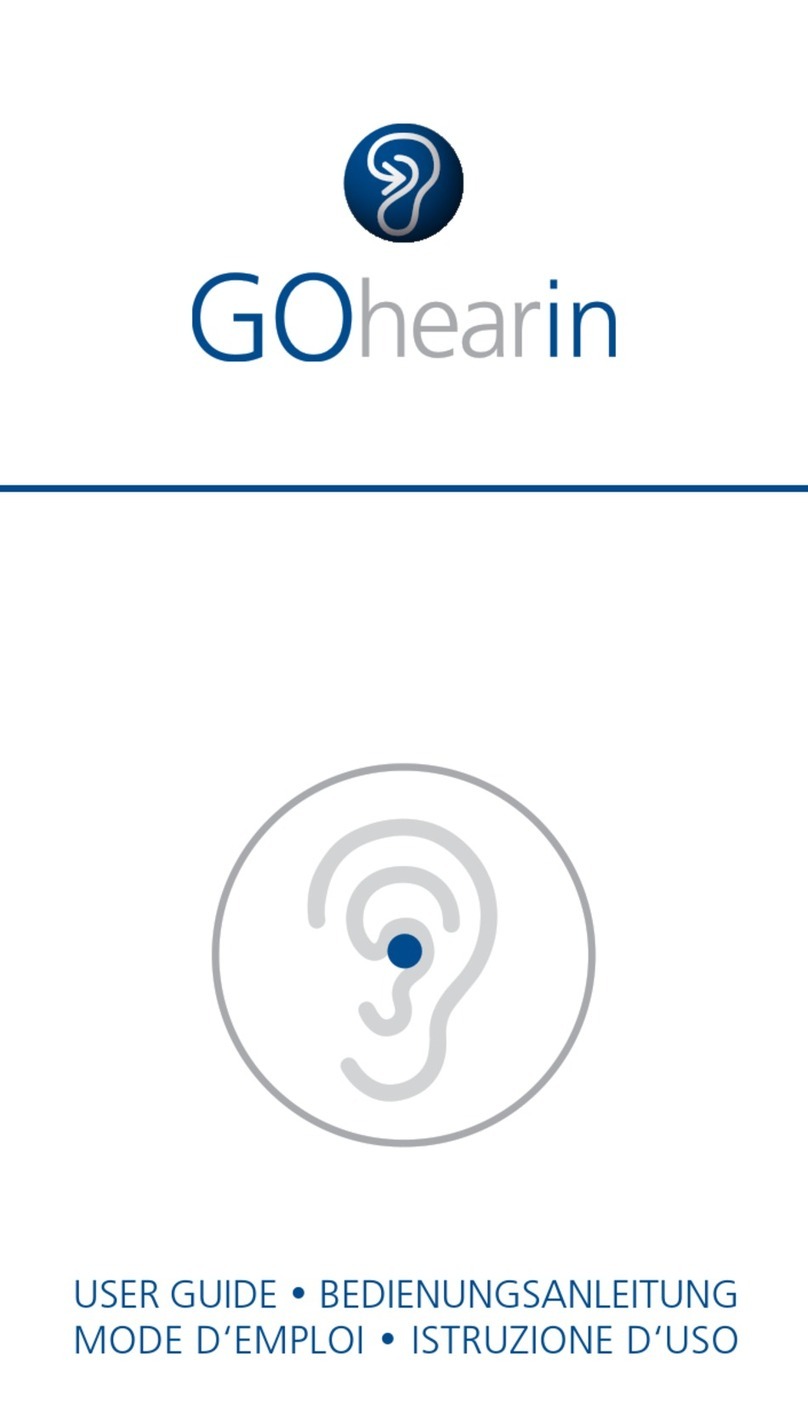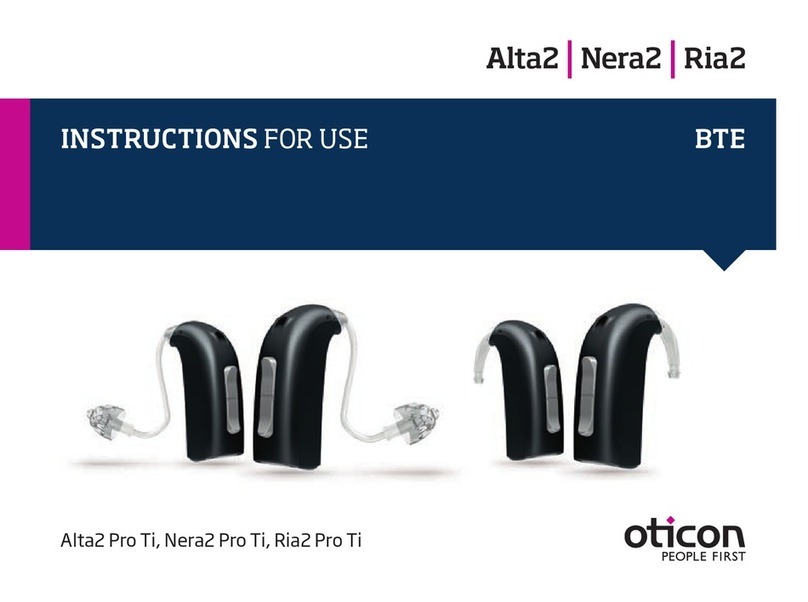4 5
DO NOT attempt to remove ear wax from your
ears. Using cotton swabs or other small objects
can damage the ear canal. Contact your physician.
DO NOT drive a motor vehicle or engage in other
activities requiring fully hearing sensitivity if the
battery in your hearing aid is low or dead.
DO NOT adjust your hearing aid while driving or
doing other activities requiring your full attention.
DO NOT push the domes of your hearing aid into
your ear except for the light placement of the
hearing aid inside the outer rim of your ear canal
as instructed by your GOhear Hearing Care Pro-
fessional. In rare cases in which a device dome or
other part becomes lodged in your ear canal, seek
medical attention for removal.
DO NOT leave your hearing aid on a radiator,
near a stove, in a sunny window, in a car or in
any other hot place. Excessive heat and cold can
damage the hearing aid.
DO NOT wear the hearing aid when using a hair
dryer at home or at the beauty salon, spa or bar-
ber as this will damage the hearing aid.
DO NOT wear the hearing aid during medical tests
done such as MRI, X-rays or CT scans. Different
types of radiation may damage the hearing aid.
Consult with your medical professional prior to
any medical test.
Safety Information
Safety Symbols used in this User Guide:
Keep the hearing aid out of the reach of child-
ren. The hearing aid contains small pieces that
may be swallowed and may cause a choking
hazard. Immediately contact your physician if
any piece is swallowed.
Read all of the information in the User Guide
before using the hearing aid.
Always follow the directions of your GOhear
Hearing Care Professional in fitting and placing
the device on your ear.
If you experience any discomfort, discontinue use,
and contact your GOhear Hearing Care Professio-
nal or physician.
Failure to change the dome according to the
instructions provided could result in an injury to
your ear.
WARNING
Indicates a potentially hazar-
dous situation which, if not
avoided, could result in
death or
serious injury.
CAUTION
Indicates a potentially hazardous
situation which, if not avoided,
may result in minor or moderate
injury to the user or patient or
damage to the equipment or
other property.
EnglishEspañol

























